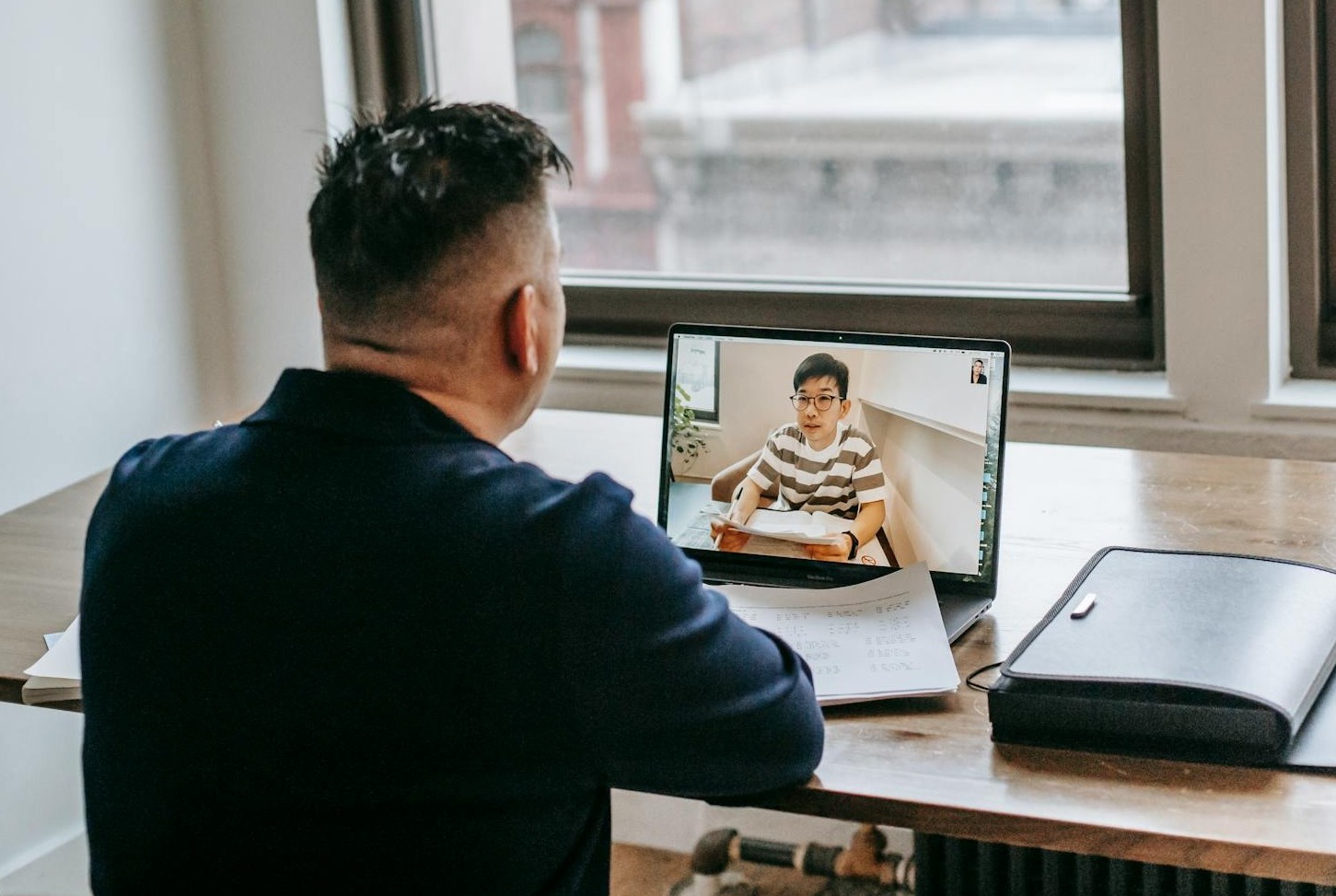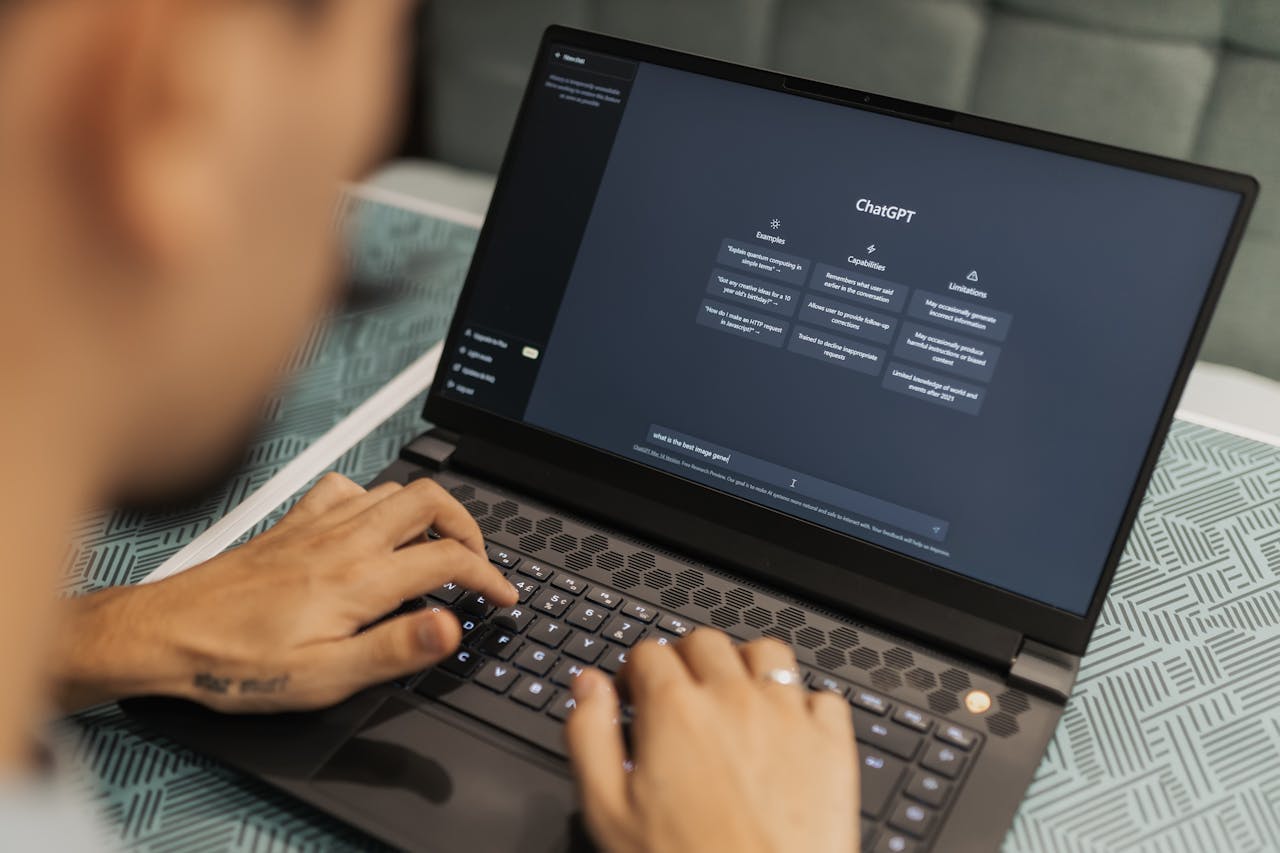The Nerdy Way to Set Language Learning Goals
If you want to learn a language, the first thing you need to do is set reasonable language learning goals.
And no – “Study 30 minutes a day” does NOT count as a goal.
If you want real results, well…you have to get a bit nerdy.
So in this post, I’ll break down what it takes to learn a language. And by the end, you’ll have the perfect action plan to learn any language you want.
But first…
Contents
Why “Study 30min / day” is NOT a Goal
Short answer: “Study 30min / day” is an ACTION you take to reach a goal – it’s NOT the goal itself.
I’ve heard many people say, “Just study a little bit every single day; you’ll get there. Language learning is a life-long journey.”
Okay, true… but this makes one major assumption.
That you’ll have the patience to continue studying even when you see 0 results.
I tried this with Spanish, early on, and FAILED.
For a bit, I felt like I was learning, but I was never able to actually speak – even to my Spanish speaking parents.
It was just embarrassing.
“What am I doing wrong?” I asked myself.
Well…I didn’t really have any solid language learning goals.
Later, I found out that studying 30 minutes a day is nowhere near close enough to actually get fluent in a reasonable time.
It would’ve taken me 12 years to learn Japanese
No joke, if I started learning Japanese by only studying 30 minutes a day, it would’ve taken me 12 YEARS to become conversationally fluent.
…and I’ll prove it to you.
As a starting point, I’m going to use the timeline created by The Foreign Service Institute (FSI Timeline).
The FSI Timeline breaks down the “hours of study” it would take to learn different languages. This is the same starting point I used to learn Japanese.
The 4 Categories of Difficulty
| Category I |
|---|
| 600-750 Hours |
| Category II |
|---|
| 900 hours |
| Category III |
|---|
| 1,100 Hours |
| Category IV |
|---|
| 2,200 Hours |
Note: The FSI Timeline was created using native English speakers learning foreign languages. However, this system can still give us a good base to build our language learning goals from (even if you’re a native speaker of a different language).
For example, Korean is listed as one of the most difficult languages for a native English speaker, but it may be one of the easier languages for a native Japanese speaker.
So in my case (as a native English speaker):
Japanese would take me an estimated 2,200 hours of active study to become conversationally fluent.
&
Spanish “SHOULD’VE” taken me about 600 hours.
I stilled failed Spanish for a different reason – I will explain later in this post.
How Long Does it takes to Learn a Language?
Knowing these hours, we can roughly estimate how long it would take to learn different languages. For example:
| Time per day | Spanish (600 hours) | Japanese (2200 hours) |
|---|---|---|
| 30 minutes | 3.28 years | 12.05 years |
| 1 hour | 1.64 years | 6.03 years |
| 2 hours | 0.82 years | 3.01 years |
| 3 hours | 0.54 years | 2.01 years |
But you’re not a robot – What about rest days?
The chart above assumes that you study every day without fail.
But real life doesn’t work that way.
- Sometimes you’re tired from a long day at work.
- Sometimes you’d rather spend time with family.
- Sometimes you just want to take a vacation.
So when we calculate our actual language learning goals, we need to account for rest days.
Calculate Your Language Learning Goals (Hours Studied)
So lets say I want to learn Spanish in 2 years – and let’s say I’m starting from 0.
It would take an estimated 600 hours to reach this goal.
If I calculate 1 to 1 – I would have to study 49.3 minutes every day.
But if I miss a day, I will be behind.
To avoid this, when setting your goals, don’t forget to account for days where you might forget or where you want to take a break.
We add 1 metric – “Days of Active Study”
In the following example, I will be using a 4 : 1 ratio – or 80% – during my calculations.
AKA: For every four days of active study, you can skip one day and still maintain the goal (4 days on; 1 day off).
You can set your own ratio; for example, the normal workweek, 5 : 2 or 71.4% (5 days on; 2 days off).
Breakdown
| Total Goal (Hours Studied) | 600 |
| Current Hours Studied | 0 |
| Time to Complete | 730 days (2 years) |
| Days of Active Study | 584 days (80% of total Time to Complete) |
| Hours Needed Per Day | 1.03 hours |
Study Time Goal Calculator
Calculate how many hours you need to study per day to reach your language learning goals in your desired timeline.
The Math
Total Goal - Current Hours Studied = Total Study Time to Reach Goal÷
Time to Complete (Days) * Ratio = Days of Active Study=
Hours Needed Per DayDoing this, you get clear and defined language learning goals.
- You have a deadline of 2 years
- And you even calculate days of rest
In total, the example above gives you 73 rest days a year (or 146 days total).
Now that might seem like a lot of free days…
However, some days you may only study for 20-30 minutes.
Nothing wrong with that, but…
These days add up faster than you would expect.
If you study for 20 minutes a day for 3 days – well, you lose 2 of your rest days.
But you can also use this to your advantage.
You can study for 1 hour and 20 minutes a day for 3 days and GAIN 1 rest day.
Play with these rest days and have fun – you can even use this to plan for vacations.
But it doesn’t end there…
It’s not just study time you need to worry about
#1 Problem for Language Learners = Lack of Vocabulary
Earlier, I said, “I stilled failed Spanish for a different reason.”
Well, this is the reason…
Good news is that we can apply the same logic to calculate our vocabulary goals too.
How Much Vocabulary Should You Know?
For this starting point, I’m going to use the Common European Framework of Reference for Languages (CEFR).
| CEFR level | Active Vocabulary | Passive Vocabulary |
|---|---|---|
| A1 | 300 | 600 |
| A2 | 600 | 1,200 |
| B1 | 1,200 | 2,500 |
| B2 | 2,500 | 5,000 |
| C1 | 5,000 | 10,000 |
| C2 | 10,000 | 20,000 |
The point where most people would feel “conversationally fluent” is about a B2 level.
Now before I go on too far, I feel like I should explain the difference between Active Vocabulary & Passive Vocabulary.
Active Vocabulary
Are words you can use in active conversation without thinking about them (or you can create new sentences with these words without the need of a dictionary).
&
Passive Vocabulary
Are words you can recognize, but you may not be able to use them in active conversation (for example, if you read the word in a book, you would understand).
When calculating our goals, our main focus will be on MAXIMIZING our passive vocabulary.
The reason why we focus on passive vocabulary and not active vocabulary is because…
Active vocabulary will naturally grow over time as you immerse yourself in the language.
In other words, you can’t build your active vocabulary without building your passive vocabulary first.
With this, we can start applying the same math, from before, to see how long it will take to build our vocabulary.
How Long Does it takes to Learn Vocabulary?
Since we’re aiming for fluency, I’m going to use 5,000 words as the goal (to reach a conversationally fluent B2 level of passive vocabulary).
We can, again, roughly estimate how long it would take (similar to what we did for hours to study). For example:
Time to Go From 0 to 5,000 Words [Viewed]
| Words/Day | Time it would take |
|---|---|
| 5 | 2.74 years |
| 10 | 1.37 years |
| 15 | 0.91 years |
| 20 | 0.68 years |
| 25 | 0.54 years |
Notice: The chart counts the “First View” of the target words. It does NOT account for the time it takes to move them into Active Vocabulary or even Passive Vocabulary.
But you “probably” don’t have a photographic memory…
It takes time to:
- See a word and to understand it…
And it takes even more time to:
- Understand a word and to actively use it.
So when we calculate our goals, we need to account for this time as well.
Calculate Your Language Learning Goals (Vocabulary)
So like before, let’s say I want to learn Spanish in 2 years and I’m starting from 0.
If I calculate 1 to 1 – I would have to add 6.85 words every day.
&
If I account for the 4 : 1 ratio (or 80%) – I would have to add 8.56 words every day.
But unlike our calculations for hours to study, we have one more thing to worry about…
We need to consider the time to build these words into our passive vocabulary.
So we will make 1 change to our math:
Time to Complete (Vocabulary) = 75% of Time to Complete (Hours)
So if the main goal is 2 years, this time we will calculate as though it was 1.5 years.
This way, we give ourselves at least 6 months (before the end of our goal) to grow these new words naturally.
Breakdown
| Total Goal (Vocabulary) | 5,000 |
| Current Words Known | 0 |
| Time to Complete | 547.5 days (1.5 years) |
| Days of Active Additions | 438 days (80% of total Time to Complete) |
| Words Needed Per Day | 11.41 (~12) words |
Vocabulary Goal Calculator
Calculate how much vocabulary you need to learn per day to reach your language learning goals in your desired timeline.
The Math
Total Goal - Current Words Known = Total Additions to Reach Goal÷
Time to Complete (75% of your "Hours to Study" Goal) * Ratio = Days of Active Additions=
Words Needed Per DayChallenge
My recommendation is to try adding 20-25 words every day.
The faster you can see new words, the faster you can build your passive vocabulary.
The more words you are familiar with the easier your studying will be.
If you ever feel overwhelmed with new words, you can slow down and focus on improving the words you know first.
Why Language Learning is NOT a Lifelong Journey
Well, at least, it shouldn’t be in the beginning.
The language learning community is very welcoming – so many people want to be helpful.
“Don’t give up. As long as you keep going, you’ll get there eventually.”
“Language learning is a lifelong journey.”
It sounds nice…
But I think this backfires sometimes…
Why? Because I believe it stops people from taking Strong Actions to actually reach their goal.
I mean – if you have the rest of your life, do you really have to try hard today?
Not only that…but something interesting happens when you hear how successful language learners ACTUALLY became fluent.
Anyone who says,
“Yeah, I watched some TV shows, studied a bit every day, played some games – and before I knew it, I was fluent.”
Is massively downplaying how much effort they actually put it.
Telling people this…does a disservice to people who don’t see it the same way.
It’s similar to the saying, “You’ll never work a day in your life if you’re having fun.”
This is great! And if you’re having fun – ALL the Better!
But that doesn’t mean work isn’t happening.
Someone open about their effort will say,
“I studied every day for at least an hour or more.”
“I surrounded myself with the language.”
“I made it a part of my life.”
This is how it feels to have clear goals work towards them.
There’s a lot of effort that goes into learning a language.
And it’s 100% rewarding, if you stick with it…
But to stick with it. you have to have clear goals…
AKA you have a clear END.
Why an End Goal Matters
How do you know if you’ve succeeded as a language learner if you don’t have an end goal?
Of course, you should always strive to learn for the rest of your life…
But language learning is a tedious process. Without an end goal, it’s easy to lose sight of why you started in the first place.
Here’s how I define the end goal:
Your end goal as a language learner should be the point in time where you no longer need “active study” to be happy with your results.
The key word is, “Active”.
We still learn our native language every day, but we no longer “need” active study.
Of course, you can always learn more – and continue a Lifelong Journey in Language Learning.
But you should reach a goal that makes you happy – first.
So…
Where do you want your end goal to be?
This One Speaking Practice Will Give You Native-Like Pronunciation
Do you ever feel self-conscious about your pronunciation when speaking a new language?
Good news: There’s one simple speaking practice you can do to get native-like pronunciation.
Why Worry About Pronunciation?
You’ve probably heard people say,
- “Getting your message across is more important than pronunciation.”
- “Having an accent is charming.”
While this is truth…that doesn’t tell the whole story.
If your accent is too thick, you will have a hard time getting your message across.
If you’re too self conscious about your accent, you will avoid talking.
Here’s why pronunciation deserves attention:
- Clarity Matters A heavy or unclear accent can make it challenging for others to understand you.
- Build Confidence Struggling with pronunciation often leads to self-consciousness. And when you feel insecure about how you sound, you’re more likely to avoid speaking. Improving your pronunciation boosts your confidence, making language use enjoyable rather than stressful.
- Cultural Connection Pronunciation is more than just sounds; it’s a bridge to understanding cultural tones and expressions. Native-like pronunciation shows that you respect and value the language and its speakers.
The Only Speaking Practice You Need for Native-Like Pronunciation

Introducing Mimic Review
Forget overwhelming exercises that throw you into the deep end. Mimic review is a focused, targeted practice technique for improving pronunciation. Here’s how it works:
- Listen to an Audio Clip by a Native Speaker Start by selecting an audio clip of a phrase or sentence spoken by a native speaker. It could be a simple greeting or any commonly used expression.
- Record Yourself Saying the Same Phrase Using the Mimic Review tool on Mezasu.com, record yourself repeating the phrase. Focus on matching the native speaker’s delivery as closely as possible.
- Compare and Repeat Play your recording alongside the original clip. Pay attention to differences in intonation, pitch, pacing, and word blending. Then, refine your pronunciation with repeated practice.
This method isn’t just effective; it’s fun! It turns pronunciation practice into a game of small wins you can measure in real-time.
What to Focus on During Mimic Review
- Intonation and Pitch Intonation refers to the rise and fall of your voice when speaking. It’s crucial in conveying questions, statements, and emotions. For tonal languages like Chinese, pitch can even change a word’s meaning.
Even in English, slight changes in pitch can make your speech sound more fluid and natural.
Coming Soon: Pitch detection feature on Mezasu.com will help visualize pitch effortlessly. - Pacing and Flow Natural speech isn’t delivered word by word. Phrases flow together, with some sounds blending and others disappearing altogether.
For example:- The Japanese phrase, 日本に行きます (nihon ni ikimasu), translates to “I go to Japan.”
- At natural speed, this phrase sounds like nihonniikimasu. The “n’s” and “i’s” merge seamlessly into one sound.
Practice breaking phrases into chunks to understand how words blend, then speed up gradually as your confidence grows.
What If You Still Struggle with Speaking?

Not seeing immediate results? Don’t worry. Speaking is a skill, and like any skill, it takes practice and patience.
Practice Slowly, Speed Up Over Time
Think of pronunciation practice like playing a musical instrument. Musicians don’t start at full tempo. If a piece is supposed to be played at 100 beats per minute, they might practice at 50 beats per minute first.
Why? To avoid mistakes and build muscle memory.
Do the same with speaking. Break sentences into smaller parts, practice them slowly, and gradually increase speed as you gain confidence and accuracy.
Use Mimic Review Regularly
Consistency is the key to making progress. By using the Mimic Review tool every day, you’ll tune your ear to native intonation, improve your pacing, and develop an ear for nuance in pronunciation.
Making Pronunciation Practice Fun and Effective

Learning pronunciation shouldn’t feel like a chore. With Mimic Review on Mezasu.com, you can transform it into a fascinating, rewarding process.
Here’s how to get started:
- Select audio content that you find interesting (You can search our public database of native audio clips or make your own audio clips from videos at Mezasu.com).
- Dedicate 10–15 minutes daily to focused Mimic Review. Consistency matters more than the length of your session.
Why Does This Technique Work?
Mimic Review combines deliberate practice with real-time feedback. You’re not just passively listening or repeating blindly. Instead, you get to analyze, adjust, and refine your pronunciation with each iteration. Over time, this method rewires your brain to think and produce sounds like a native speaker.
Start Your Speaking Journey Today
When doing speaking practice, native-like pronunciation is NOT the main goal; it’s about process. Every small improvement brings you closer to speaking with clarity, confidence, and fluency.
Take control of your language-learning experience today. Head over to Mezasu.com and try Mimic Review for free. The tool is designed to make your pronunciation practice accessible, effective, and engaging.
Remember, the key to success is consistent practice, attention to detail, and a willingness to make mistakes. After all, every expert speaker started out as a beginner.
Best Speaking Practice for Language Learning
When it comes to language learning, speaking often feels like the most intimidating skill to master. It’s one thing to grasp grammar rules and memorize vocabulary, but actually stringing those words together in real-time? That’s a different challenge altogether. (and many people skill speaking practice altogether).
The good news? Speaking is a skill that can absolutely improve with deliberate practice. Whether you’re shy about speaking or just don’t know where to start, this guide is here to help. Below, we’ll explore proven tips to make your speaking practice more effective (and yes, even fun).
Contents
The Secret to Speaking Practice That Works
The most crucial trick to improving your speaking skills? Active Recall.
Active recall is the practice of trying to remember something without looking it up first. When you work your brain to recall words or phrases, you’re training it to actively retrieve that information when needed. Instead of passively reviewing vocabulary, practice forming sentences or phrases on your own first, then go back and fill in the gaps where necessary.
This method challenges your brain in ways passive learning cannot and builds the confidence you need to use the language fluently.
Now, with this principle in mind, let’s jump into the specific strategies to level up your speaking.
1. Talk to Yourself

Talking to yourself might feel a little strange at first, but trust us, it’s one of the most practical ways to practice speaking.
Narrate Your Day in Your Target Language
Describe what’s happening around you or explain your plans for the day in your target language. For example, while making breakfast, you might say in Spanish, “Estoy preparando huevos y tostadas para desayunar.”
If you’re unsure of how to describe something, jot it down in your native language and look it up later. The next time you’re in a similar situation, you’ll be equipped with the right phrase!
Sing in Your Target Language
Singing your favorite songs in your target language is an incredible way to practice pronunciation and rhythm. Choose a song, look up the lyrics, and sing along. Even if you don’t understand everything initially, singing makes speaking both engaging and memorable.
2. Mimic What You Hear on TV

Turn your binge-watching habit into a speaking exercise. Pick a movie, show, or clip in your target language, and repeat what the speakers say, mimicking their tone, speed, and pronunciation. This is known as the “shadowing” technique.
Why This Speaking Practice Works
- You naturally pick up nuances like intonation and sentence rhythm.
- It’s a fantastic way to expand your vocabulary.
- You’ll sound more like a native speaker over time.
For extra practice, turn on subtitles in your target language to follow along and reinforce the connection between written and spoken words.
Try out our Mimic Review tool FREE – listen to native speakers and record yourself. This is the fastest and simplest way to practice your speaking.
3. Find Friends on Language Exchange Apps

Practicing with others is one of the most effective ways to improve your speaking skills. Language exchange apps like Tandem or HelloTalk make it easy to connect with native speakers.
Start with Text Messages
If you’re nervous about real-time conversations, text first. While it might seem unrelated to speaking, texting allows you to familiarize yourself with common phrases and sentence structures, building your confidence.
Progress to Voice Messages
Send voice notes instead of typing. Voice messages give you time to structure your sentences and practice pronunciation while still simulating a real conversation.
Graduate to Calls or Video Chats
When you’re ready, hop on a video call! Conversations can still feel slightly daunting, but they’re the closest you’ll get to practicing in real-life scenarios. Focus on key phrases, relax, and make mistakes—that’s where real learning happens.
4. Hire a Tutor (Paid Option)

If you’re ready to invest in your speaking skills, hiring a tutor is a game-changer. Professional tutors can tailor lessons specifically to your goals, correct your mistakes immediately, and push you outside your comfort zone.
Platforms like iTalki, Preply, and Verbling allow you to connect with tutors for affordable 1-on-1 sessions.
Pro Tip:
If real-time lessons are intimidating, prepare a script or topic in advance. This way, you’ll have structure and gain confidence over time.
5. Talk with AI in Your Target Language

Can’t find a conversation partner? AI tools like chatbots and virtual assistants can help! You can even use built-in assistants like Siri by switching their language to your target one.
Why Do Speaking Practice with AI?
- AI provides instant feedback if it doesn’t understand you.
- You can practice without any judgment or anxiety.
- It’s available anytime, making it perfect for busy schedules.
Example:
Ask your virtual assistant for weather updates or directions in your target language to practice everyday phrases.
Overcoming Common Speaking Practice Challenges
Speaking a language can be tough, even with consistent practice. Here are some common hurdles and how to tackle them:
Anxiety
Fear of making mistakes often stops people from practicing. To overcome this, remind yourself that mistakes are essential to learning. Native speakers won’t judge you—in fact, most will appreciate your effort!
Listening Comprehension
Understanding others is just as important as speaking. To strengthen listening skills, immerse yourself in your target language through podcasts, songs, and TV shows.
Limited Vocabulary or Grammar
If you feel stuck, it might be because your vocabulary or grammar is limiting your ability to express yourself. Dedicate time to learning the most commonly used phrases and grammatical structures for casual conversations.
What Other Skills Do I Need To Master A Foreign Language?
There are 4 core skills you need to master a foreign language.
Listening, Reading, Writing, Speaking.
- Listening – Best Listening Practices for Languages Learners (article coming soon).
- Reading – Best Reading Practices for Languages Learners (article coming soon).
- Writing – Best Writing Practices for Languages Learners (article coming soon).
Mastering all these components in sync is the secret to becoming fluent in any language.
Wrap-Up: Speaking Practice Takes Time, but You’ve Got This
Speaking doesn’t happen overnight, but with consistent practice, you’ll get there. Try the tips above, sprinkle in some patience, and don’t forget to enjoy the process. Remember, every mistake you make is just another step closer to fluency.
Which tip will you try first? Start practicing today, and watch your speaking skills soar!

